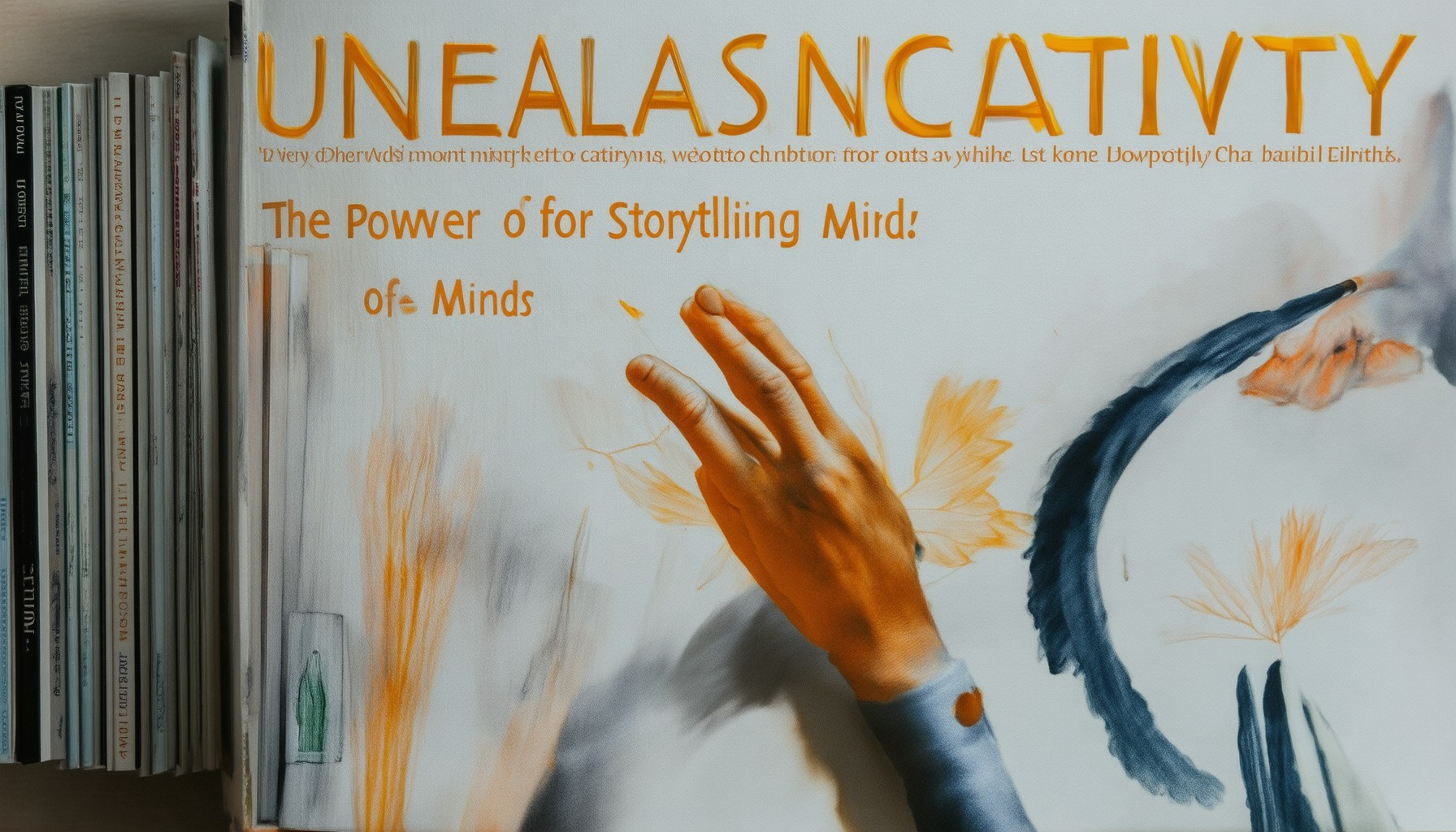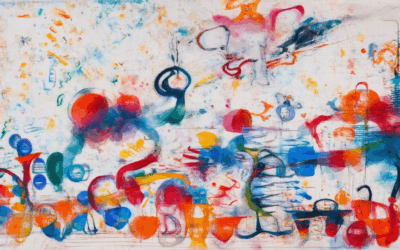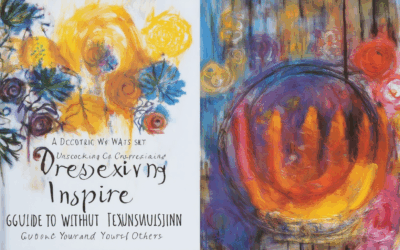Storytelling is a powerful medium that resides within each of us, often waiting to be uncovered and expressed. For creative minds, harnessing the art of storytelling can unlock new dimensions of innovation and self-expression. Whether through personal narratives, imaginative tales, or structured stories, storytelling serves as a catalyst for creativity, helping individuals explore uncharted territories of their minds. This article delves into the essence of storytelling for creative minds, examining its role in fostering creativity, its various forms, and how it can be applied to unlock fresh perspectives and ideas. By understanding the mechanics of storytelling, we can learn to craft compelling narratives that resonate deeply with others, while also discovering the transformative power it holds for our own personal and professional growth.
Key Takeaways
– Fosters Creativity: Unleashes innovative thinking by engaging the mind in constructing vivid narratives.
– Enhances Imagination: Transports individuals to new worlds, expanding their perspective and sparking curiosity.
– Builds Emotional Connections: Creates empathy and understanding through relatable stories, aiding in problem-solving.
– Encourages Collaboration: Strengthens teamwork and communication, fostering shared vision and creative outcomes.
– Preserves Culture: Serves as a vital method for passing down traditions and historical knowledge.
– Inspires Innovation: Presents challenges and solutions, encouraging creative thinking and fresh approaches.
– Develops Critical Thinking: sharpens analytical skills by challenging listeners to interpret and synthesize story elements.

The Five Cs of Storytelling
The art of storytelling is often broken down into key components that help create engaging and memorable narratives. Among these, the five Cs—Character, Context, Conflict, Climax, and Closure—are foundational elements that every great story must master. These components work together to captivate audiences and convey meaningful messages effectively.
- Character : At the heart of every compelling story lies well-defined characters. Whether it’s the protagonist, antagonist, or supporting cast, each character must be relatable, multi-dimensional, and driven by clear motivations. Audiences connect with characters they can identify with or root for, making the story more impactful.
- Context : Context provides the setting, time period, and cultural backdrop that frames the story. It gives the audience a mental map, helping them understand the world in which the events unfold. Effective context allows readers or viewers to immerse themselves more deeply into the narrative.
- Conflict : Conflict introduces tension and drives the story forward. It could be an internal struggle, an external challenge, or a clash between opposing forces. Without conflict, a story lacks direction and interest, making it difficult to sustain the audience’s engagement.
- Climax : The climax is the pivotal moment where the story reaches its peak. This is where the outcome becomes uncertain, heightening the emotional stakes and leading to significant changes. A well-crafted climax leaves a lasting impression on the audience.
- Closure : Finally, closure resolves the story, providing a satisfying conclusion. It can tie up loose ends, offer a twist, or leave the audience reflecting on the themes presented. A strong closure ensures the story feels complete and meaningful.
By mastering these five Cs, storytellers can craft narratives that resonate emotionally and intellectually, making their stories stand out and linger in the minds of those who hear or read them.
What is Creative Storytelling?
Creative storytelling is the art of capturing attention and imagination through compelling narratives. Whether through words, images, or sounds, it involves crafting stories that resonate emotionally and intellectually. At its core, every creator is a storyteller, choosing different mediums to share their vision.
The Importance of Creative Storytelling
Storytelling is a universal human trait, used across industries like marketing, education, and entertainment. It helps convey complex ideas simply, engages emotions, and builds connections. In today’s digital age, effective storytelling adapts to new platforms while maintaining its essence.
Key Techniques in Creative Storytelling
- World-Building: Creating a vivid setting that feels real to the audience.
- Character Development: Crafting relatable and memorable characters.
- Conflict and Resolution: Building tension and delivering a satisfying conclusion.
- Imaginative Details: Using descriptive language to paint scenes and emotions.
Examples Across Industries
In marketing, brands use storytelling to differentiate themselves. For instance, Patrick Mettraux inspires readers through personal narratives and artistic reflections, fostering a community of inspired creators. Similarly, in education, teachers use storytelling to make complex subjects accessible and engaging.
Whether through books, films, or digital content, creative storytelling remains a powerful tool for communication and connection. By mastering it, we can transform ideas into experiences that resonate deeply with others.

Four Types of Storytelling
Storytelling is a universal human activity that serves various purposes across cultures and industries. Below are the four primary types of storytelling, each with distinct characteristics and applications:
- Personal Stories : These are narratives rooted in individual experiences, often sharing personal anecdotes, life events, or emotional journeys. Personal stories are deeply connective and relatable, making them ideal for building empathy and fostering trust.
- Fictional Stories : These are imaginative tales created from the author’s imagination or based on a fictional world. Fictional stories are abundant in literature, film, and theater, offering audiences a escape from reality and exploring themes like love, adventure, and conflict.
- Factual Stories : These are based on real events, historical accounts, or documented experiences. Factual storytelling is commonly found in journalism, documentaries, and historical writings, aiming to inform, educate, and inspire based on verifiable facts.
- Mythological Stories : Originating from ancient traditions, these stories often involve supernatural elements, deities, and legendary figures. Mythological storytelling is foundational in many cultures, shaping beliefs, values, and societal norms.
Conclusion
Understanding the different types of storytelling allows us to appreciate their unique roles in communication and culture. Whether personal, fictional, factual, or mythological, stories have the power to educate, entertain, and inspire. By leveraging effective storytelling techniques, we can create meaningful connections and drive impact across various platforms.
For more insights on storytelling and creative expression, visit Patrick Mettraux .

How Does Storytelling Promote Creativity?
Storytelling is a powerful medium that fosters creativity by engaging audiences in a meaningful way. It allows individuals to explore diverse perspectives, spark imagination, and develop innovative ideas.
1. Encourages Imagination: By creating vivid narratives, storytelling enables people to visualize new worlds, characters, and scenarios. This process nurtures creativity by stimulating the mind and exploring possibilities beyond conventional thinking.
2. Fosters Emotional Connection: Stories resonate deeply with readers, evoking emotions and creating a sense of empathy. This emotional engagement can inspire creative solutions and innovative problem-solving by connecting experiences to feelings and motivations.
3. Develops Critical Thinking: Storytelling challenges listeners to interpret characters, plot twists, and themes, sharpening their ability to analyze and synthesize information. This skill translates well into other creative endeavors, fostering innovation.
4. Enhances Collaboration: Group storytelling activities encourage teamwork, communication, and shared vision. Collaborative efforts often lead to unique and creative outcomes as participants draw inspiration from each other’s contributions.
5. Preserves Culture and History: Oral storytelling serves as a vital method for preserving cultural heritage and historical accounts. By recounting traditions and experiences, it ensures that valuable knowledge is passed down across generations.
Through its ability to inspire, connect, and challenge, storytelling stands as a cornerstone of creativity, offering endless opportunities for innovation and self-expression. Explore the power of storytelling on Patrick Mettraux and discover how it can unlock your creative potential.
Why is Storytelling So Powerful?
Storytelling is a powerful tool that resonates deeply with our human nature. It has the unique ability to engage us emotionally, mentally, and socially, making it an invaluable method for communication, education, and inspiration. Here are some key reasons why storytelling is so impactful:
- Persuasion and Influence : Stories are highly effective at influencing behavior and opinions. By presenting information in a narrative form, storytellers can make complex ideas more relatable and memorable, leading to greater acceptance and impact. [Learn More]
- Enhancing Memory and Learning : Research shows that stories are much more engaging than mere facts. They allow listeners to connect with the content on a deeper level, making information stickier and easier to retain. [Explore Techniques]
- Building Social Connections : Sharing stories fosters a sense of community and empathy. When people share their experiences, it creates a bond that strengthens relationships and promotes teamwork. [Discover More]
- Fostering Innovation and Creativity : Stories often highlight challenges and solutions, inspiring creative thinking. By exploring different scenarios, listeners can develop fresh ideas and approaches to problem-solving. [Spark Creativity]
- Leadership and Inspiration : Great leaders use storytelling to convey their vision and experiences, motivating others to action. This technique helps teams understand goals and strategies on a personal level. [Lead with Stories]
A Call to Action
If you’re looking to harness the power of storytelling, start small. Share a personal anecdote or read a book that uses the medium effectively. Over time, you’ll notice how it transforms your interactions and influences. [Get Started]

How Does Storytelling Help Imagination?
Storytelling is a powerful tool that greatly enhances imagination. By crafting and sharing stories, we transport ourselves to new worlds, explore untamed landscapes, and encounter fascinating characters. This process of imaginative engagement fosters creativity, allowing us to envision possibilities beyond our everyday experiences.
- Transportation to Magical Worlds: Stories take us on journeys to distant galaxies, historical eras, and imaginary realms. This exploration broadens our perspective and sparks curiosity, fueling our capacity for innovation.
- Fostering Creativity: Through storytelling, we learn to construct narratives, solve problems, and express emotions. These skills are foundational to developing creativity in various aspects of life.
- Emotional Connection: Stories resonate deeply with our emotions, helping us understand complex feelings and relate to diverse experiences. This emotional engagement enriches our imaginative processes.
- Collaboration Skills: Sharing stories encourages teamwork and communication, essential traits for imaginative problem-solving and collaborative projects.
- Moral and Life Lessons: Stories often convey values and teach important life lessons. This exposure shapes our decision-making abilities and imaginative approaches to real-world challenges.
By embracing storytelling, we unlock our imaginations and cultivate a mindset open to endless possibilities. Whether through reading, writing, or listening, stories are a gateway to a richer, more creative life.
Explore more insights on storytelling and creativity on our website .





0 Comments